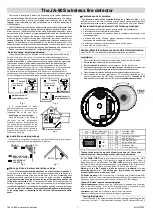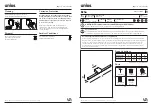
Chapter 7: Digital Detector
5495975-1EN Rev.9
7-22
© 2013-2017 General Electric Company. All rights reserved.
–
Detector: 4.3 kg(9.5 lbs.)
–
Battery: 0.2kg((0.5 lbs.)
Tether Length:
–
default length: 7m
–
for selection length: 4m,10m
Image area:40.4cm x 40.4cm(15.9 in X 15.9 in)
Active matrix: 2022 x 2022 pixels
Raw Image File Size:8mb
Pixel Pitch: 200 microns
Typical Upper Dynamic Range: 7.8 mR
Typical DQE@0lp/mm: 68%
Communication
Wireless point-to-point network between the system and detector for transferring image data
communication over wide 500MHZ channels to achieve very high data rates
Low output power to limit range to less than 10 meters to increase safety and spectrum reuse
Designed to co-exist with 802.11 networks without interference
Frequency: 3.1-10.6GHz.Users Band Group 1 and 3 for global coverage
Max Power Output: -41.3dBm
Max PHY Data rate: 480Mbps
Effective Throughput: 30-70Mbps
Standards: WiMedia PHY spec v1.2,WiMedia MAC spec V1.0,Certified Wireless USB spec v1.0
Environmental Constraints
This section describes the environmental conditions that the detector is designed to withstand.
The Digital Detector operates within an optimal temperature range for better performance. Should the
maximum detector temperature be reached, it will power down in an attempt to allow for it to cool.
It is recommended to power down the detector for 10 minutes to allow for cooling when the warning
message is displayed. This message will display in the message log of the user interface when the sur-
face temperature has reached 39 degrees Celsius. For optimal cooling time the detector should be
removed from detector tray, powered off and inserted into charging bin or other safe area.
If the detector has not been allowed to cool, an expose inhibit will be placed. This will occur at 40 degrees
Celsius.
CAUTION
Operation or storage outside of these constraints may cause damage to the
detector.
















































